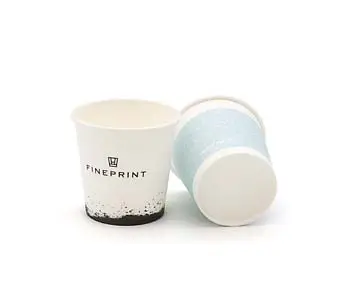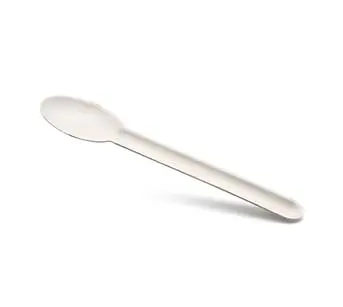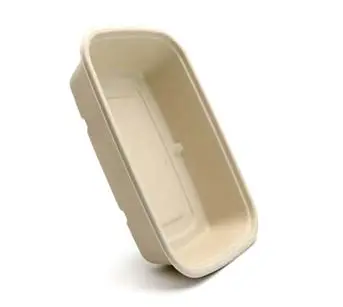The world of packaging has evolved significantly over the years, and one type that has gained widespread popularity is clamshell packaging. Clamshell packaging refers to a type of container that consists of two hinged halves that can be opened and closed like a clamshell, hence the name. This type of packaging is commonly used for various products, ranging from electronics to food items, as it provides excellent protection and visibility while enhancing product presentation.
Definition of Compostable Clamshell Containers
Clamshell packaging can take on different forms depending on the specific requirements of the product it is designed for. However, in general terms, it consists of two rigid plastic or biodegradable halves joined together by a hinge.
The halves are often transparent or have a clear window to allow consumers to see the product inside without opening the package. This characteristic makes clamshells an ideal choice when visual appeal and customer engagement are crucial factors in marketing and sales.
Growing Concern for Eco-Friendly Packaging Solutions
In recent years, there has been a growing concern regarding the environmental impact of traditional packaging materials, particularly plastics. The excessive use of single-use plastics has led to pollution in landfills and oceans, causing harm to ecosystems worldwide. As society becomes more aware of these issues, there is an increasing demand for eco-friendly alternatives that minimize waste generation and promote sustainability.
With this shift in consumer preferences towards sustainability, businesses are now looking for innovative solutions that offer both functionality and eco-friendliness. Therefore, there is a pressing need to explore how clamshell packaging can adapt to these changing demands by embracing environmentally friendly materials and design practices.
Overview of Eco-Friendly Packaging
Importance of Sustainable Packaging in Reducing Environmental Impact
Sustainable packaging has become increasingly significant in addressing the environmental concerns associated with traditional packaging materials. The detrimental effects of non-biodegradable plastics, excessive waste generation, and carbon emissions from manufacturing processes have propelled the need for eco-friendly alternatives.
By adopting sustainable packaging practices, we can mitigate pollution, conserve natural resources, and contribute to a healthier planet. Eco-friendly clamshell packaging serves as a step forward in achieving these objectives by offering innovative solutions that balance functionality with environmental responsibility.
Advantages of Eco-Friendly Clamshell Packaging
Compostable clamshell containers present several advantages over conventional packaging options. Firstly, it provides a sustainable alternative to petroleum-based plastics by utilizing biodegradable or compostable materials.
This reduces the reliance on fossil fuels and minimizes carbon emissions during production. Secondly, green clamshell packaging offers improved end-of-life options compared to traditional counterparts.
These packages can be easily recycled or composted, reducing their impact on landfill space and enabling a more circular economy. Additionally, such packaging often incorporates innovative design features that optimize material usage and reduce waste generation throughout the supply chain.
By considering the entire lifecycle of a product's package, eco-friendly clamshells promote responsible consumption while maintaining functionality and visual appeal. Thought-Provoking Subtitle: "Empowering Change: The Rise of Eco-Friendly Clamshell Packaging"
Materials Used in Eco-Friendly Clamshell Packaging
Biodegradable Plastics: PLA and PHA
The quest for sustainable packaging solutions has led to the emergence of biodegradable plastics as a viable alternative to traditional petroleum-based plastics. One notable example is polylactic acid (PLA).
PLA is derived from renewable resources, such as corn starch or sugarcane, making it a plant-based polymer that significantly reduces the carbon footprint associated with packaging production. PLA clamshell packaging offers various benefits, including its transparency, durability, and resistance to grease and moisture.
Moreover, PLA has the advantage of being commercially compostable under specific conditions. Despite its merits, PLA does have limitations that need to be considered.
First and foremost, it requires industrial composting facilities for proper breakdown. If disposed of in regular waste streams or landfills without access to these specialized facilities, its biodegradability may be hindered significantly.
Additionally, while PLA can be recyclable in theory, practical recycling infrastructure for this material is still limited. Polyhydroxyalkanoates (PHA) represent another promising option within the realm of biodegradable polymers for clamshell packaging.
PHAs are naturally occurring polyesters that can be produced by microorganisms using renewable feedstocks like vegetable oils or sugars. Similar to PLA, PHA offers biodegradability under specific conditions and has satisfactory barrier properties against moisture and grease.
Compostable Materials: Paperboard and Bagasse
Paperboard stands out as an excellent choice for green clamshell packaging due to its renewability and recyclability. Derived from wood pulp or recycled paper fibers, paperboard exhibits robust structural integrity while remaining lightweight and versatile enough for various product applications. It provides an environmentally conscious alternative without compromising on functionality or sturdiness.
Additionally, paperboard has the advantage of being widely recycled, ensuring its potential for circularity within the packaging industry. Bagasse, a residue obtained from sugarcane processing, offers an intriguing alternative material for eco-friendly clamshells.
Composed of plant fibers left after extracting juice from sugarcane stalks, bagasse is a readily available agricultural waste product that can be transformed into a useful packaging material. Its natural fiber structure contributes to excellent strength and resistance properties.
Bagasse-based clamshell packaging not only reduces reliance on traditional plastics but also helps divert agricultural waste from landfills. However, challenges related to cost-effectiveness and scalability of bagasse production need to be addressed for broader adoption in the market.
Design Considerations for Eco-Friendly Clamshell Packaging
Optimizing Material Usage and Reducing Waste
Unquestionably, one of the most crucial aspects of eco-friendly clamshell packaging design lies in optimizing material usage to minimize waste. The importance of right-sizing the package cannot be emphasized enough. By tailoring the dimensions of the clamshell to fit the product snugly, excess material usage is significantly reduced.
This not only helps reduce costs but also minimizes environmental impact. Additionally, employing innovative design techniques like nesting or interlocking features can further optimize space utilization within transportation and storage, allowing more products to be packaged using fewer materials.
Incorporating Recyclability into the Design
To ensure sustainability throughout a product's lifecycle, incorporating recyclability into clamshell packaging design is essential. One effective approach is through the introduction of mono-material designs, which simplify the recycling process by eliminating complex combinations of different materials that are challenging to separate and recycle properly. Mono-material designs facilitate easy sorting at recycling facilities, promoting higher recycling rates and reducing waste ending up in landfills or incinerators.
Subtitle: Uniting Simplicity with Sustainability
Inclusion of Clear Recycling Instructions on the Package Itself
Educating consumers about proper recycling procedures is paramount for successful eco-friendly packaging initiatives. Including clear recycling instructions directly on clamshell packages ensures that users have immediate guidance on how to dispose of them correctly after use.
These instructions can outline which parts are recyclable (e.g., plastic components) and highlight any steps required for preparation (such as removing labels or separating different materials). By making recycling instructions easily accessible, consumers are empowered to play an active role in sustainable waste management practices.
By implementing these design considerations in Compostable clamshell containers production, we can embrace a more environmentally conscious approach, minimizing waste, optimizing material usage, and promoting a circular economy. These design principles offer opportunities for businesses to align their products with sustainable values while providing consumers with eco-friendly packaging options that contribute to a greener future.
Novel Innovations in Eco-Friendly Clamshell Packaging
Use of Mycelium-Based Materials
Subtitle: The Fungi's Solution to Plastic-Free Packaging Mycelium, the vegetative part of fungi, has emerged as a fascinating and promising alternative for eco-friendly clamshell packaging. This innovative approach involves growing mycelium into specific shapes to replace traditional plastic clamshells.
Mycelium-based materials exhibit remarkable properties, such as being biodegradable, renewable, and compostable. By harnessing the incredible growth capabilities of mycelium, environmentally-conscious companies are embracing this natural solution to create packaging that mimics plastic's functionality without its adverse environmental impacts.
Explanation on How Mycelium can be Grown into Specific Shapes to Replace Traditional Plastic Clamshells
Subtitle: Nature's Sculptors Redefine Packaging Design The process of growing mycelium-based materials into specific shapes to replace plastic clamshells involves a technique called bioplastic molding. It starts by inoculating agricultural waste or other organic materials with fungal spores.
As the spores germinate and grow, they weave together a network of fine filaments known as hyphae. These hyphae intertwine through the substrate and form a solid structure called a mycelial mat.
By controlling factors like temperature and moisture content during cultivation, manufacturers can precisely shape the mycelial mats into various designs suitable for clamshell packaging. Once matured, these structures can be dried and treated to halt further growth before being utilized as sustainable alternatives.
In the realm of eco-friendly clamshell packaging, novel innovations continue to push boundaries towards more sustainable solutions. The use of mycelium-based materials represents an exciting advancement in this field - one that holds immense promise for replacing traditional plastic clamshells. By harnessing the natural growth capabilities of fungi, companies can create packaging that is not only functional but also biodegradable, renewable, and compostable.
As we witness these innovative approaches gaining traction, there is renewed hope for a future where packaging materials align harmoniously with environmental stewardship. By embracing such advancements, we can contribute to a greener and more sustainable world.




